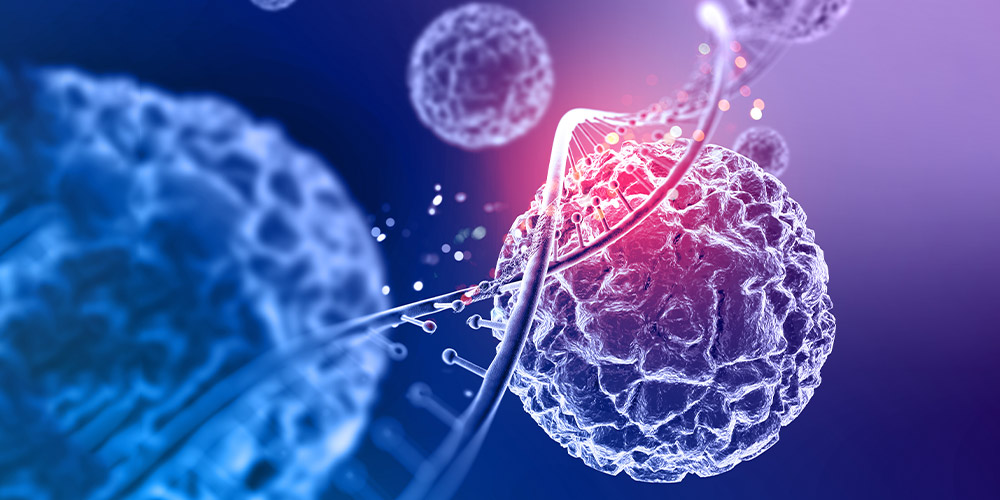
Lymphoma is a type of blood cancer that starts in your immune system, specifically in the lymph nodes, small glands found in areas like your neck, armpits, and groin. These nodes are part of a network that helps your body fight infections and diseases.
In lymphoma, certain white blood cells called lymphocytes start growing out of control. Instead of protecting your body, they pile up, forming lumps (swollen lymph nodes) and can spread to other parts of the body.
What is Blood Cancer?
Blood cancer affects the cells that are essential for human survival — the blood cells. Your blood is made up of three main types of cells:
- Red blood cells (RBCs): Carry oxygen throughout your body, helping organs and tissues function properly.
- White blood cells (WBCs): Part of your immune system, fighting infections and illnesses.
- Plasma: The liquid part of your blood that transports nutrients, hormones, and waste while helping blood cells move around.
When any of these cells become abnormal or cancerous, they stop working properly. This can lead to serious issues like weakened immunity, reduced oxygen supply, and excessive bleeding. Essentially, blood cancer disrupts your body’s ability to stay healthy and fight disease.
Types of Blood Cancer
Types of Blood cancer fall into three main categories, each with several subtypes:
- Leukemia
- Myeloma
- Lymphoma
In this blog, we’ll focus specifically on lymphoma.
What is Lymphoma?
Lymphoma is cancer of the lymphatic system, the network of tissues and organs that helps your body fight infections.
It primarily affects a type of white blood cell called lymphocytes, which are key to immune function. Lymphoma can cause lymph nodes to swell and lead to symptoms like fever, weight loss, and fatigue.
There are two main types of lymphoma:
- Hodgkin lymphoma
- Non-Hodgkin lymphoma
While both affect lymphocytes, they differ in how they progress, the specific cells involved, and the treatments used.
Hodgkin vs. Non-Hodgkin Lymphoma:
One of the biggest differences between Hodgkin and Non-Hodgkin lymphoma is the type of abnormal white blood cell they involve.
- Hodgkin Lymphoma: Identified by the presence of a specific cell called the Reed-Sternberg cell (an abnormal B-cell). It’s relatively rare but more treatable compared to non-Hodgkin lymphoma.
- Non-Hodgkin Lymphoma: More common and can involve various types of B-cells and T-cells. It tends to be more aggressive and can occur in different parts of the lymphatic system — and even outside of it.
Other key differences include:
- Age: Hodgkin lymphoma is more often diagnosed in young adults (ages 15–40), while Non-Hodgkin lymphoma is more common in older adults.
- Symptoms: Although they share many symptoms, Non-Hodgkin lymphoma can be trickier to diagnose early because its symptoms often mimic other conditions.
Key Differences: Hodgkin vs. Non-Hodgkin Lymphoma
| Feature | Hodgkin Lymphoma | Non-Hodgkin Lymphoma |
|---|---|---|
| Key Cell Involved | Reed-Sternberg cells | B-cells or T-cells (no Reed-Sternberg cells) |
| Common Age Group | 15–40 years | 60+ years |
| Spread Pattern | Predictable, orderly spread from one lymph node group to another | Often random, can spread outside lymph nodes early |
| Prevalence | Less common | More common |
| Treatment Response | High cure rates, especially when detected early | Variable; some types respond well, others are aggressive How is Leukemia Diagnosed? |
| Typical Symptoms | Swollen nodes (neck, armpits), fatigue, night sweats, weight loss | Swollen nodes anywhere, abdominal pain, loss of appetite, bone pain |
| Prognosis | Generally favorable | Depends on the subtype and stage Symptoms of Hodgkin vs. Non-Hodgkin Lymphoma |
Symptoms of Hodgkin vs. Non-Hodgkin Lymphoma
Both types share some common symptoms, but they may present differently:
- Hodgkin Lymphoma: Swollen lymph nodes (especially in the neck or armpits), fatigue, night sweats, and unexplained weight loss.
- Non-Hodgkin Lymphoma: Swollen lymph nodes that can appear anywhere in the body, along with symptoms like abdominal pain, loss of appetite, or bone pain if other organs are involved.
Recognizing these symptoms early is crucial. However, only medical testing can confirm a lymphoma diagnosis, so be sure to consult your healthcare provider if you notice any of these signs.
Types of Lymphoma
There are several types of lymphoma, each affecting the body differently. Here’s a quick look at some major types:
- Follicular Lymphoma: A common, slow-growing type of non-Hodgkin lymphoma that often starts in lymph nodes but can spread.
- Primary Mediastinal B-Cell Lymphoma: A more aggressive form of non-Hodgkin lymphoma, usually affecting the chest area.
- Bulky Lymphoma: Characterized by large tumors affecting lymph nodes or organs.
- T-Cell Lymphoma: A rarer form that affects T-cells involved in immune defense.
- CNS Lymphoma: Affects the central nervous system and can cause symptoms like headaches, confusion, and vision problems.
- Marginal Zone Lymphoma: A slow-growing non-Hodgkin lymphoma that often involves the stomach, spleen, or lymph nodes.
- MALT Lymphoma: A slow-growing type of blood cancer that usually starts in the stomach and is linked to long-term inflammation or infection.
How I knew I had Lymphoma
Sometimes I wonder how I knew I had lymphoma, as the first symptoms often seem minor and are easy to overlook—like fatigue, swollen lymph nodes, or unexplained weight loss. These early signs are usually dismissed or misattributed to everyday stress or common infections. But recognizing these symptoms and seeking medical attention can make a crucial difference.
Is Lymphoma Genetic or Hereditary?
When people ask, Is lymphoma genetic or hereditary? the answer is not so straightforward. Lymphoma is not usually hereditary, but certain genetic mutations can increase a person’s risk. In most cases, the disease is linked to acquired mutations that develop during a person’s lifetime due to environmental or immune-related factors. While family history may have some influence, lymphoma typically does not run in families.
Which Lymphoma is Worse?
Which Lymphoma Is Worse? Hodgkin or Non-Hodgkin Type — Non-Hodgkin lymphoma (NHL) is generally considered more dangerous than Hodgkin lymphoma (HL).
Hodgkin lymphoma usually has a higher survival rate and often responds very well to treatment, especially when caught early. Non-Hodgkin lymphoma, however, covers a wide range of subtypes, some of which can be aggressive, spread quickly, and be more challenging to treat.
In simple terms:
- Hodgkin lymphoma = usually easier to treat and cure.
- Non-Hodgkin lymphoma = more aggressive and harder to manage in some cases.
Your doctor will recommend the best treatment based on the specific type and stage of lymphoma.
Clinical Trials for Lymphoma
Clinical trials play a vital role in advancing lymphoma treatments, offering access to new therapies that may not be widely available yet. Some examples include:
- Follicular Lymphoma Clinical Trials: Focused on new treatments for this slow growing but challenging non-Hodgkin subtype.
- Diffuse Large B-Cell Lymphoma (DLBCL) Clinical Trials: Exploring better options for treating this aggressive non-Hodgkin subtype.
If you’re interested in clinical trials, talk to your healthcare provider about available options.
Also Read: Difference Between Leukemia and Lymphoma
Conclusion:
Lymphoma is a serious condition, but treatments are improving every year, helping people live longer and healthier lives. Thanks to advances in research, survival rates continue to rise. Early detection and personalized treatments make a huge difference in outcomes.
If you’re concerned about your risk or symptoms, don’t hesitate to reach out to a healthcare provider. They can guide you through the next steps and answer any questions you may have.







